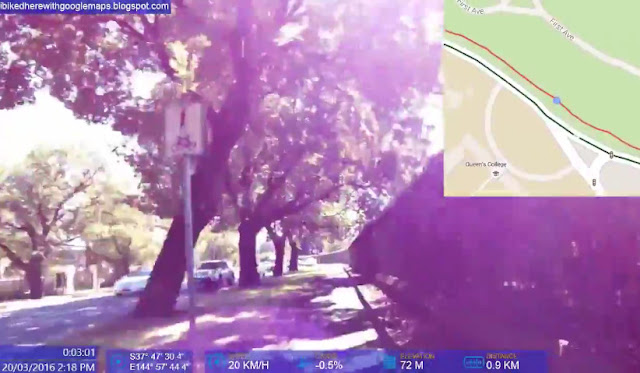Murray Rd and Gaffney St - Accurately display gaps in Dedicated bike lanes
Summary: Google Maps Cycling layer often doesn't show gaps in Dedicated lanes. Substantial gaps in bike lanes usually have a considerable impact on cyclist safety and comfort. It also denies cyclists the opportunity to find safer alternate routes. Morevoer, hiding the gaps (or incorrectly labelling them "bicycle-friendly" instead) allows government agencies to escape their accountability to provide a genuine bikeway network.Murray Rd and Gaffney St have a significant gap in the Dedicated bike lanes that provides a vital east-west cycling arterial in Melbourne's northern suburbs. In 2014, I previously tried to have these gaps displayed by editing Google Map Maker but my corrections were rejected without explanation. Google Maps has now been edited incorrectly to hide the missing bike lanes with incorrect "Trails" and "Bicycle-friendly roads." This needs to be fixed. The onroad gaps in cycling facilities need to be shown not hidden.
Status: Reported to Google Maps again on 1 July 2016 but not yet fixed.
Issue Type: Issue 7: Gaps in bike lanes should be displayed not concealed on Google Maps
Prior Google Maps Cycling Layer:
I've previously tried to correct the below section of Murray Rd and Gaffney St where the Dedicated bike lane disappears and cyclists are left to mix it with 60km/hr traffic or inconveniently walk their bike to piecemeal sections of footpath (now relabelled shared paths) on alternating sides of the road.
One thing is abundantly clear: no section of the road marked in red below has any useful cycling facilities. Hence, Google Maps should represent these roads accurately as gaps.
Issue 7: Gaps in bike lanes should be displayed not concealed on Google Maps
Google Maps Cycling Layer (as of 1 July 2016):
Since then, Google Maps Cycling layer has been mysteriously edited but only to hide the absence of cycling facilities. Some sections have been changed to "Bicycle-friendly roads" even though they are very unfriendly to cyclists. Others use the existence of useless, piecemeal footpaths (relabelled as shared paths) on alternating sides of the road to mark up the road in the safest colour (dark green Trails).

Google Maps Cycling layer - Murray Rd and Gaffney St
Despite the Google Maps changes, the reality of cycling on this road hasn't changed. The Dedicated bike lanes end and cyclists are left with no safe-enough, accessible cycling facilities. This is easily proven by simply reviewing the video below which accurately shows the change in cycling conditions on the entire length of this route:
YouTube IBHWGM - Murray Rd and Gaffney St (Darebin Creek to Moonee Ponds Creek)




































